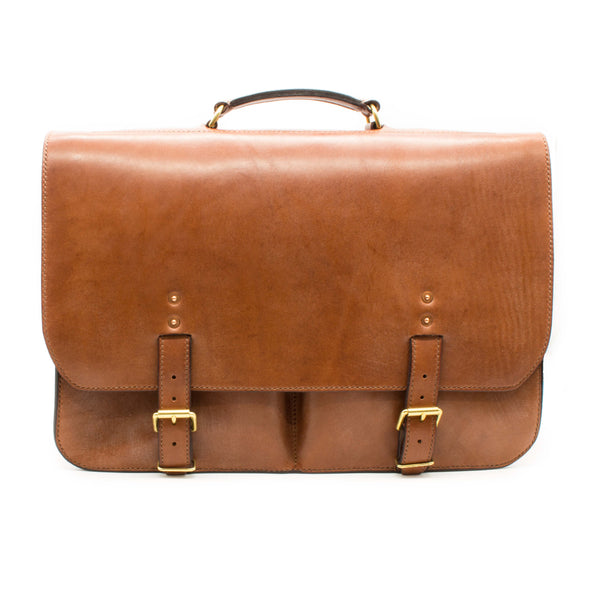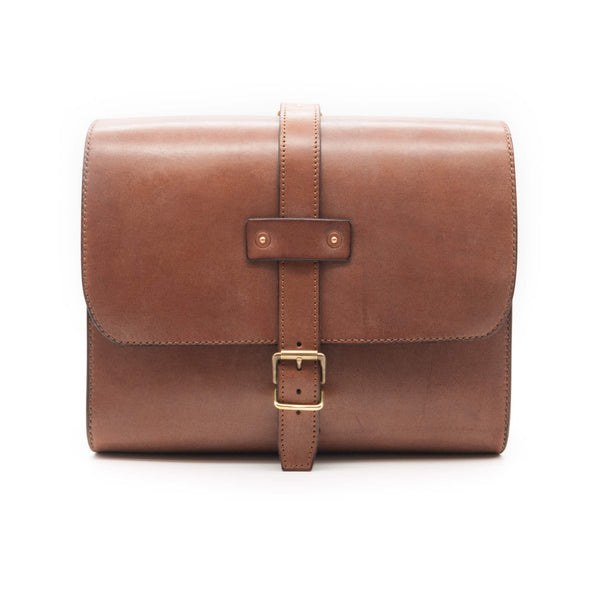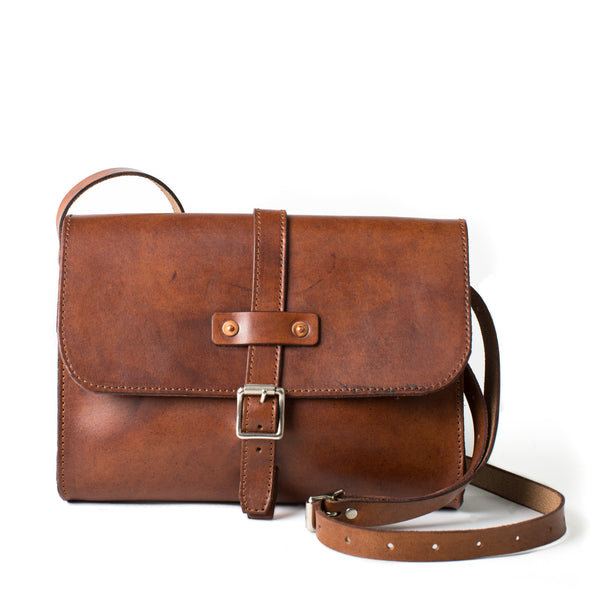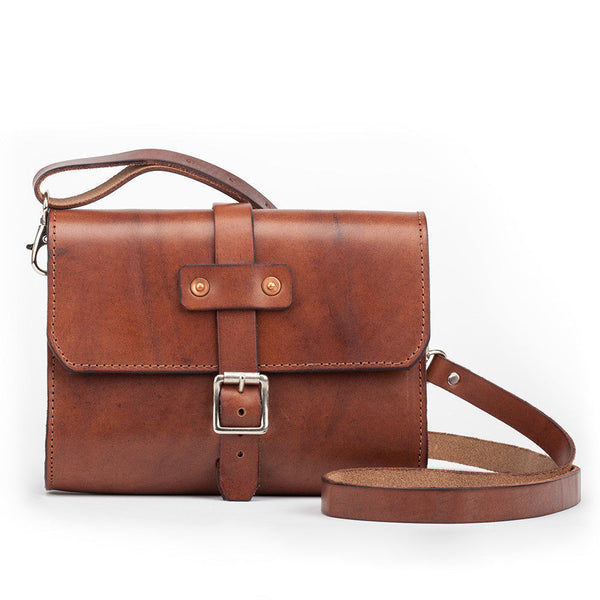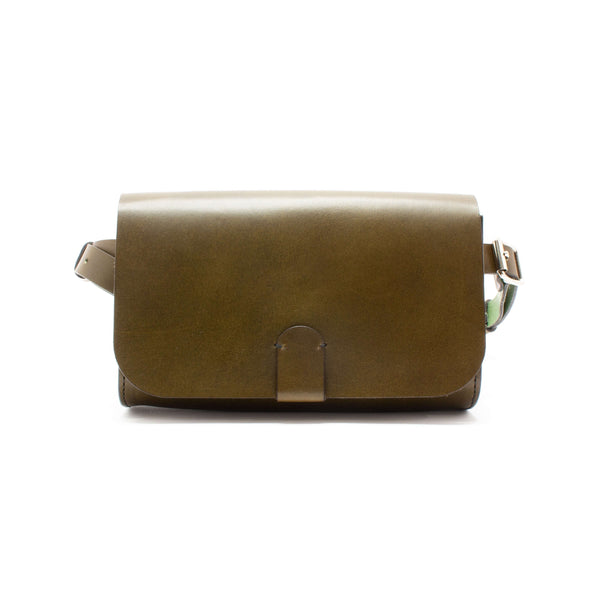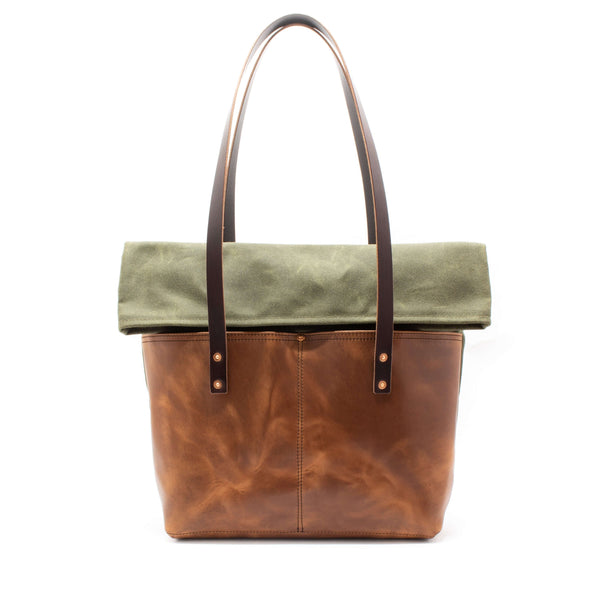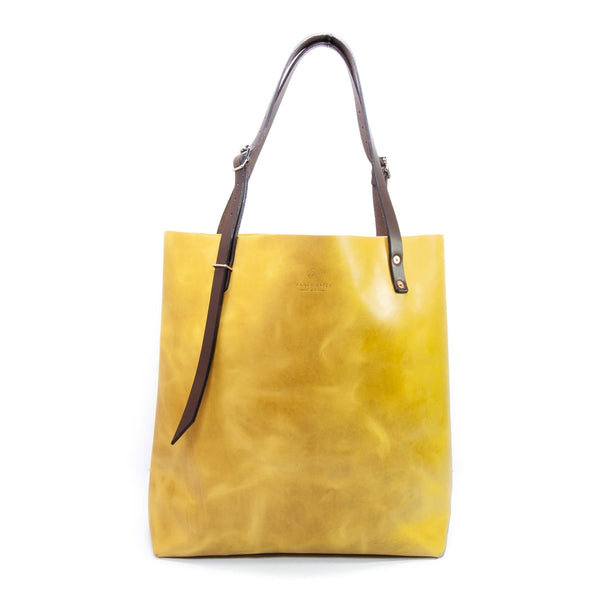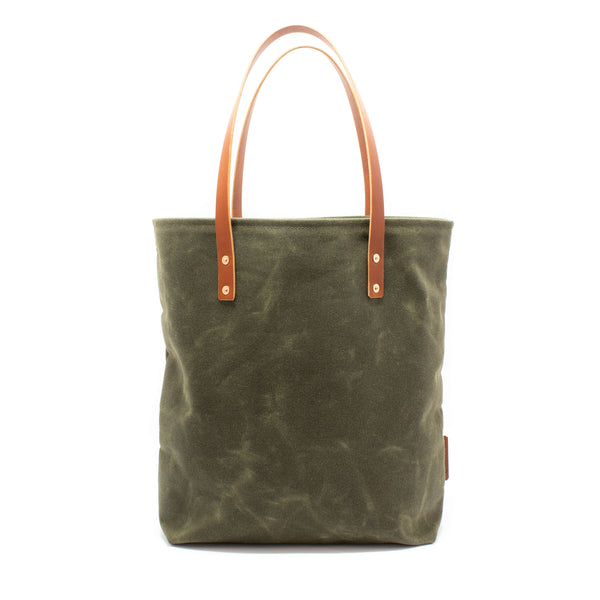
Leather Bags
Tanner Bates’ handmade leather bags are made from the best quality leather, cut and stitched using traditional saddlers tools in our Devon workshop.
Our artisan leather bags are not only beautiful but will last for many years, even becoming heirlooms to be passed down to the next generation. Naturally tanned leather can take a battering and won’t rot, so your bag will build in character over the years with every use.
Our leather is made in a tannery in East Devon, run by a water wheel. The mahogany brown stain is applied by hand giving a depth and an irregular appearance. The tallow, which deepens the colour and adds suppleness to the hide, is kept warm on a gas ring and then pressed into the grain with a glass slicker on a ancient slate bench.
Traditional leather techniques allow us to create the best quality leather bags that will be coveted by many and feel luxurious while being functional.
Designed with a classic look but for modern use, our bags will comfortably fit your digital devices while carrying a story as old as time. Internal pockets have been created to separate and store pens, phones and iPads, while our leather travel bags have rear pockets for your passport and travel tickets. Even the smaller bags are big enough stash an A6 notebook, keys, mobile and wallet.
An Insight into the History of Handmade Leather Bags
From Humble Beginnings to a Symbol of Status
The process of tanning, a method to treat and preserve leather, was discovered by the Greeks, who began vegetable tanning around 500 BC, a method that remarkably continues to be used in modern times. The Romans adopted leather extensively, crafting a myriad of products, including shields, saddles, and harnesses.
In our contemporary world, leather accessories have become indispensable household items thanks to their durability, robustness, and technological advancements in leather processing. Among these, the leather bag stands as both a practical tool and a fashion statement.
The Birth of the Leather Bag
As man began to devise innovative ways to manipulate animal hides, the rudimentary form of a leather bag began to take shape. These early leather bags also found use as a holding device for gatherings.
The Evolution of Leather Bags
By the Renaissance period, skilled craftsmen were producing stylish and practical leather bags. Bags with multiple and even hidden pockets started being designed during this period.
Over the following centuries, these bags were refined and improved, evolving from practical items to luxury goods. Beautifully crafted leather bags were sought after by affluent individuals, and with the advent of cheaper materials for making durable bags, these meticulously crafted leather bags became synonymous with luxury.
The Modern Leather Bag
The evolution of leather bags has led to them attaining an esteemed position in the market. A quality leather bag is considered a symbol of professionalism and good standing. They offer superior protection compared to bags made from other materials.
The Handbag: A 20th Century Phenomenon
The first set of 'luxury handbags' is believed to have been made in 1841 as a custom order for an English Industrialist, Samuel Parkinson. He ordered a set of travelling bags from a London shop called H. J. Cave (owned by Harriet Jane Cave), specifying that they be made of leather. While the resultant bags, considered the first 'modern' handbags, were criticised for being too heavy, they marked the beginning of a new era in the history of handmade leather bags.
The Evolution of Handcrafted Bags
In the 18th century, new trends spread that necessitated the use of slimmer and less bulky clothing. That's when the use of bags made a comeback, spreading up to the 19th century.
By the 1930s, major brands began to produce new models of handbags, clutches, shoppers, and luxury accessories. From the 1970s onwards, women's bags continued to spread like wildfire and reach the present day in sizes, styles, materials, embroidery, finishes, and colours of all kinds.
The Modern Leather Bag Industry
This revolution was particularly embraced by younger women. Major global companies like Chanel, Louis Vuitton, Kate Spade, and Gucci emerged, leading the industry. Today, many of the leather bags are produced by these brands.
In summary, handmade leather bags have come a long way, from their humble beginnings as simple carrying devices to becoming symbols of sophistication and style. Their journey is a testament to the evolution of craftsmanship and the enduring allure of quality and durability. As we continue to innovate and experiment with design and materials, the future of handmade leather bags promises even more exciting developments.
Why Choose Handmade Leather Bags?
Handmade leather bags are better for the environment as they are built to last, reducing the need for frequent replacements. They are also more unique, crafted individually with care and attention to create an item that is completely unique.
Frequent questions about handmade leather bags
What is the highest quality leather for bags?
Full-Grain Leather: Full-grain leather is widely recognised as the best quality leather available. It's made from the top layer of the hide and includes all the natural grain. It's extremely durable and long-lasting, and develops a beautiful patina over time, enhancing its aesthetics. Full-grain leather bags are often expensive, reflecting their high quality.
Top-Grain Leather: This is a slightly lesser quality than full-grain but is still considered high-end. The surface is sanded and refinished to remove imperfections. It's softer and more pliable than full-grain leather but less durable in the long run.
Vegetable-Tanned Leather: Vegetable tanning is an artisanal process that uses tannins found in plant species to tan the leather. It's environmentally friendly and offers a unique and rich patina as it ages. Vegetable-tanned leather is robust and resilient.
Exotic Leathers: Some exotic leathers, such as crocodile, alligator, and ostrich, are considered luxury materials and are highly sought after for premium bags. They offer unique textures and finishes but can be much more expensive and require special care.
Shell Cordovan: This type of leather comes from a horse's hindquarters. It's a dense, rich leather known for its smooth finish and beautiful shine. It's a premium choice, often found in high-end bags and accessories.
Pebbled Leather: Pebbled leather, often made from full-grain leather, is treated to have a textured surface that resembles small pebbles. This not only adds to the visual appeal but also helps in masking minor scratches or wear, making it a popular choice for bags.
Remember, the quality of the leather isn't solely determined by the type but also by the tanning and finishing process, craftsmanship, and care. Always look for reputable manufacturers and sellers who specialise in quality leather goods to ensure you're getting a product that meets your expectations.
Are real leather bags worth it?
Durability: Genuine leather bags generally last longer than synthetic leather or other materials. With proper care, a real leather bag can last for decades.
Timelessness: Leather has a timeless appeal and never truly goes out of style. A classic leather bag can be a long-term investment in one's wardrobe.
Feel & Appearance: Many people prefer the texture, look, and feel of real leather over synthetic alternatives. Over time, leather can develop a unique patina, enhancing its character.
Resale Value: High-quality leather bags, especially from renowned brands, can retain a significant portion of their original value and can be sold second-hand if they are well-maintained.
Sustainability: While the leather industry has its environmental concerns, quality leather products tend to be more durable and long-lasting than many synthetic alternatives, leading to potentially less waste over time. Some also argue that leather, being a byproduct of the meat industry, is a way to use more parts of an animal rather than wasting it.
Ethical Concerns: Some people avoid leather products due to concerns about animal welfare. If you are one of them, you might consider vegan leather or other alternatives. Note, however, that not all synthetic alternatives are environmentally friendly.
Maintenance: Real leather requires care to maintain its look and durability. This can include regular cleaning, conditioning, and protecting it from extreme weather conditions.
Cost: Genuine leather products are typically more expensive than synthetic or other materials. It's essential to weigh the initial cost against the potential longevity and timeless style of the product.
Breathability: Leather is a natural material that is often more breathable than synthetic alternatives. This can be particularly relevant for items like shoes or clothing.
Allergies: Some people might be allergic to certain types of synthetic materials but not to genuine leather (or vice versa).
In conclusion, whether real leather bags are "worth it" depends on your personal values, aesthetic preferences, budget, and lifestyle. It might be worth considering how much use you will get out of the bag, how long you intend to keep it, and how important the above factors are to you when making a decision.
What thickness of leather is best for bags
Here's a general guide to the most appropriate thicknesses for various bags, remember though, it is only a guide:
Lightweight Bags (clutches, small purses, etc.):
1mm – 1.5mm: These are generally suitable for soft, lightweight bags without the need for heavy-duty use.
Medium Weight Bags (handbags, shoulder bags, etc.):
Heavy Duty Bags (satchels, messenger bags, briefcases, duffle bags, etc.):
2mm – 2.5mm: These are thicker and can handle more weight, offering durability for bags meant for regular or rough use.
Belts, Straps, and Handles:
2mm – 3mm or more: Since these parts of the bag need to be particularly durable and handle tension, it's generally best to use thicker leather. Here our oak bark leather belts are approximately 4.5mm thick.
Keep in mind these general guidelines:
Softness vs. Rigidity: Thinner leathers tend to be more pliable, while thicker leathers are sturdier. If you want a bag that stands upright and maintains its shape, opt for thicker leather. If you prefer something more soft and flexible, go with thinner leather.
Weight: The thicker the leather, the heavier it will be. This might be a consideration if you're concerned about the weight of the bag, especially if you'll be carrying it for extended periods.
Type of Leather: Different types of leather, such as full-grain, top-grain, or split leather, will have varying degrees of strength, flexibility, and durability, which can influence your decision on thickness.
Finishing and Tanning: The way leather is tanned and finished can also affect its properties. For example, chrome-tanned leather is generally softer and more flexible than vegetable-tanned leather.
How can you tell if a leather bag is good quality?
Type of Leather:
Full-grain leather: This is the highest quality of leather. It's the outermost layer of the hide and contains all the natural grain. Bags made from full-grain leather are durable, long-lasting, and can develop a beautiful patina over time.
Top-grain leather: This leather has had the very top layer sanded off to remove imperfections. It's more uniform in appearance than full-grain but is less durable in the long run.
Genuine leather: This term can be misleading. Genuine leather is usually made from the leftover parts of the hide after the top layers have been removed. It's of lower quality and less durable.
Bonded leather: This is the lowest quality and is made from leather scraps that are bonded together with adhesives.
Stitching: Check for tight, even stitches. Uneven stitching or loose threads can indicate poor craftsmanship. Hand-stitching, although rarer and more expensive, is often seen as a hallmark of a high-quality leather bag.
Hardware: The zippers, buckles, clasps, and other hardware should be made of metal, solid brass or stainless steel is usually regarded as the best quality. Cheap alloy metals and plastic are best avoided. Fittings should operate smoothly and feel sturdy.
Smell: Genuine leather has a distinct smell that's hard to replicate. If the bag has a chemical or plastic-like odour, it might be made from synthetic materials or poor-quality leather.
Edges: In high-quality leather bags, edges are often burnished and polished to ensure they don't fray or degrade easily. Raw edges can indicate a lack of attention to detail.
Price: While not always the case, a higher price often reflects the use of high-quality materials and craftsmanship. However, be wary of overpriced brands where you might be paying more for the brand name than the actual quality of the bag.
Origin: Leather from certain countries or regions is often associated with high quality. For instance, Italian leather is renowned for its quality and craftsmanship and English bridle leather is renowned for its strength.
Tanning Process: Leather can be tanned using different processes, with vegetable tanning and chrome tanning being the most common. Vegetable-tanned leather is considered more eco-friendly and can develop a unique patina over time, while chrome-tanned leather is softer and more resistant to water.
Brand Reputation: Established brands with a history of quality can be a good indicator, but always evaluate the product on its own merits, as lesser-known or artisan brands can offer superior quality at a more reasonable price.
Return Policy & Warranty: A company that stands behind its products will often have a robust return policy or warranty.
In conclusion, determining the quality of a leather bag involves a combination of understanding the materials used, assessing the craftsmanship, and using your senses to feel and smell the product.

